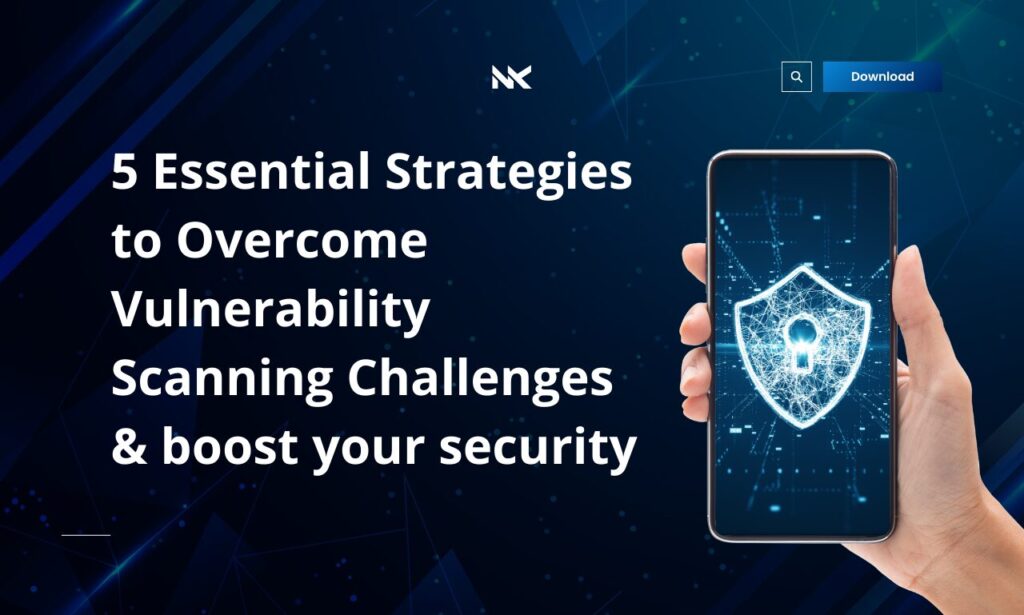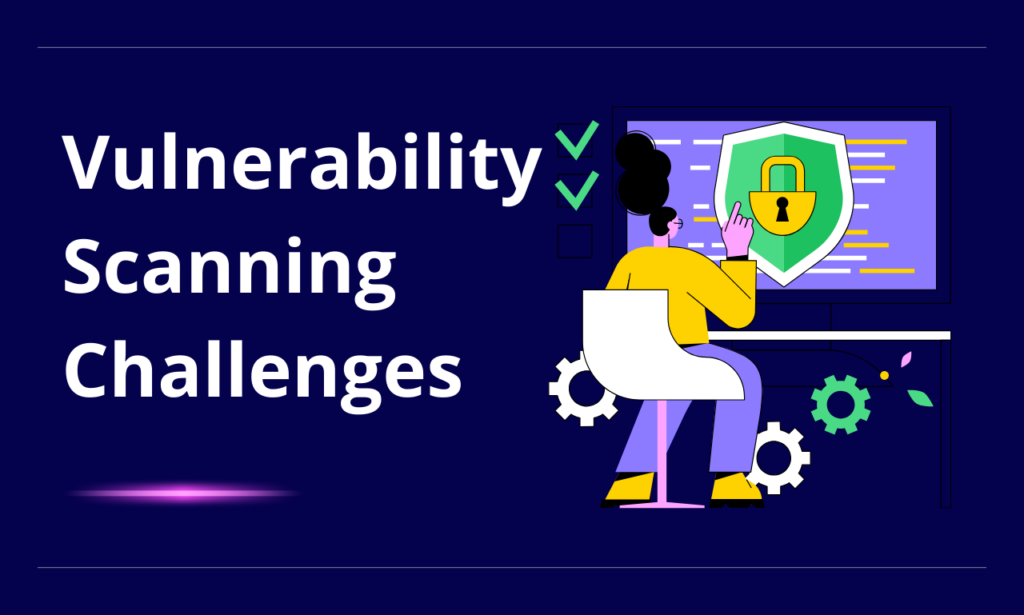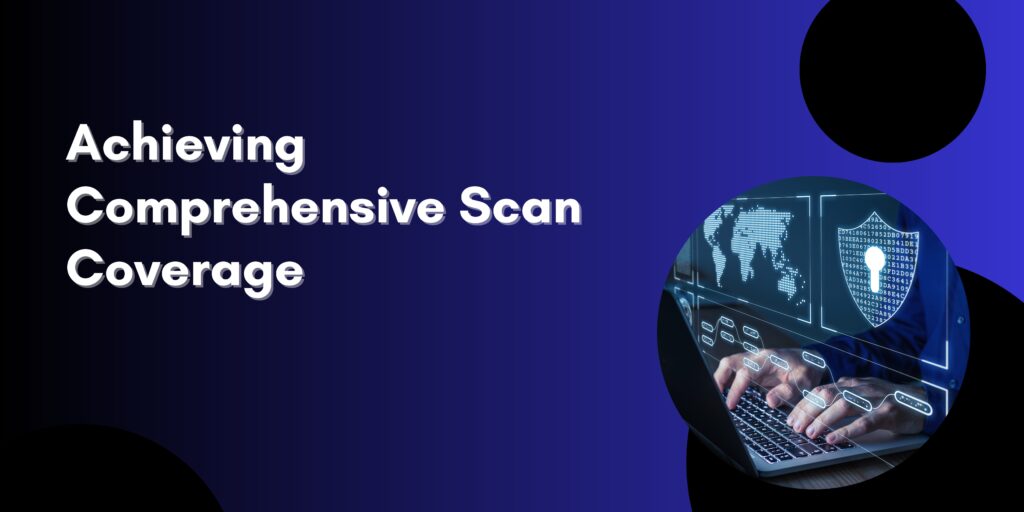5 Essential Strategies to Overcome Vulnerability Scanning Challenges & boost your security

In an era where digital threats are constantly evolving, vulnerability scanning emerges as a critical defensive tool in the cybersecurity arsenal. It serves not just as a preventive measure but as a strategic approach to identify, assess, and mitigate vulnerabilities before they can be exploited. However, the effectiveness of vulnerability scanning is often hampered by several challenges that can undermine an organization’s security posture. This article delves into understanding these challenges in detail and outlines strategic measures to overcome them, thereby enhancing the security framework of any organization.
Table of Contents
Introduction
Vulnerability scanning plays a pivotal role in identifying and mitigating security weaknesses before they are exploited. However, the effectiveness of vulnerability scanning can be significantly hampered by various vulnerability scanning challenges, including false positives and negatives, scan performance issues, and coverage gaps. This article explores five critical strategies to navigate and overcome these obstacles, ensuring that your vulnerability scanning efforts effectively enhance your security posture. Vulnerability Scanning Challenges are a cornerstone of cybersecurity, aimed at identifying weaknesses in your network and systems before they can be exploited. However, the process comes with its unique set of challenges that can undermine its effectiveness.
Understanding Vulnerability Scanning Challenges
Understanding the intricacies of vulnerability scanning challenges is the first step toward bolstering an organization’s cybersecurity measures. By addressing the dual Vulnerability Scanning Challenges of false positives and negatives, optimizing scan performance to minimize operational impact, and ensuring comprehensive coverage, organizations can significantly enhance their security posture.

False Positives and Negatives
The Dual Challenge: Vulnerability scans can often flag issues that aren’t vulnerabilities (false positives) or miss real vulnerabilities (false negatives). This scenario presents a dual challenge: on one hand, false positives can drain resources and divert attention from genuine threats; on the other hand, false negatives leave organizations unknowingly exposed to potential attacks.
Impact on Security Posture: Both false positives and negatives can significantly impact an organization’s security posture. False positives create a cry-wolf scenario, leading to alert fatigue among security teams. Conversely, false negatives are akin to unseen icebergs capable of sinking the unsinkable. Balancing the scales between these inaccuracies is crucial for maintaining a vigilant and responsive cybersecurity strategy.
Scan Performance and Impact
Resource Consumption: Vulnerability Scanning Challenges are resource-intensive operations. They can consume significant bandwidth and computing power, potentially affecting the performance and availability of critical systems and networks. This challenge is especially pronounced in environments where continuous operations are paramount.
Balancing Act: The act of conducting thorough vulnerability scans without degrading system performance requires strategic planning. It involves choosing the right timing for scans, optimizing scan configurations, and employing methods that minimize the operational impact. This balance ensures that security measures do not become a hindrance to the organization’s operational efficiency.
Scan Coverage and Completeness
Comprehensive Detection: Ensuring that vulnerability scans cover all possible threats across an organization’s digital footprint is a formidable challenge. Factors like network segmentation, dynamic assets, and sophisticated cyber threats complicate the ability to achieve complete coverage.
Strategic Approach to Coverage: Achieving comprehensive scan coverage necessitates a strategic approach. It requires an in-depth understanding of the organization’s infrastructure, incorporating various scanning methods, and continuously updating the scanning scope to include new and emerging threats. This holistic approach is essential for creating a security posture that is both resilient and adaptive.
Tackling False Positives and Negatives
False positives and negatives are among the most significant challenges in vulnerability scanning, often leading to wasted resources and overlooked vulnerabilities. Here’s how to mitigate these issues effectively:
Selecting the Right Tools
Choosing a vulnerability scanner that fits your specific environment is crucial. Different scanners have varying strengths, and some may be more suited to your network architecture, types of devices, or the applications you use. Opt for a scanner known for its accuracy and one that receives regular updates from a reputable provider. This ensures that the scanner can accurately identify the latest vulnerabilities and reduces the likelihood of false positives.
Customizing Scan Configurations
A one-size-fits-all approach doesn’t work with vulnerability scanning. To minimize false positives and negatives, tailor your scanner settings to your environment. This involves:
- Defining the Scope: Clearly specify which assets need to be scanned. This helps in focusing the scanner’s efforts on relevant targets, reducing the chances of irrelevant alerts.
- Adjusting Sensitivity: Adjust the sensitivity levels of the scanner. Higher sensitivity might increase false positives but will reduce the risk of missing critical vulnerabilities. Find a balance that suits your risk tolerance.
- Excluding Known Issues: If certain benign issues consistently trigger alerts, consider excluding them from future scans. However, this should be done cautiously to avoid creating blind spots in your security posture.
Verifying Results with Manual Testing
Relying solely on automated scans can lead to misinterpretations. Incorporate manual testing to verify the scan results. This step is crucial for distinguishing between false positives and actual vulnerabilities. Manual verification can involve:
- Penetration Testing: Use ethical hacking techniques to exploit identified vulnerabilities, confirming their existence and potential impact.
- Code Review: For software applications, a detailed code review by experienced developers can uncover the root causes of vulnerabilities flagged by the scanner, helping to confirm or refute the findings.
- Consulting with Developers and System Administrators: Sometimes, the context provided by those who developed or managed the system can clarify whether an identified issue is a genuine threat or a false alarm.
Enhancing Scan Performance Without Sacrificing Network Integrity
Optimizing the performance of vulnerability scans while ensuring they do not adversely affect the network or system performance is a critical balance. Below are strategies to achieve this balance:
Strategic Scan Scheduling
The timing of vulnerability scans can significantly impact network and system performance. To minimize disruption:
- Schedule During Low Traffic Times: Conduct scans during off-peak hours, such as nights or weekends, when network usage is minimal. This reduces the chance of overloading systems and causing disruptions to daily operations.
- Limit Frequency of Scans: While regular scanning is essential, excessively frequent scans can burden systems and networks. Determine an optimal scan frequency that balances the need for up-to-date security insights with the importance of maintaining system performance.
Utilizing Less Intrusive Scan Options
Different scanning methods have varying impacts on network and system resources. To minimize adverse effects:
- Non-Intrusive Scans: Opt for less aggressive scan options that are designed to minimize system load. While these may not provide as deep an insight as more intrusive scans, they can offer a good balance between maintaining performance and identifying vulnerabilities.
- Use of Credentials: Credential scans, where the scanner logs into the system as a user, can often reduce the system load by avoiding the need for aggressive techniques used to uncover vulnerabilities from the outside. These scans can provide deeper insights with less network disruption.
Achieving Comprehensive Scan Coverage

Ensuring that vulnerability scans cover all relevant assets and vulnerabilities is essential for effective security. Here’s how to enhance scan coverage:
Incorporating Multiple Scan Sources
Relying on a single source or type of scan can lead to gaps in coverage. Employing a combination of scanning techniques ensures broader and more accurate detection:
- Internal and External Scans: Utilize both internal scans, which assess the internal network for vulnerabilities that could be exploited by insiders, and external scans, which simulate attacks that could be launched from outside the network.
- Active and Passive Scans: Active scanning involves sending packets to systems and analyzing responses to identify vulnerabilities. Passive scanning listens to network traffic to identify potential security issues without sending probing data, offering a less intrusive option.
Extending Scans to Cloud and Containers
With the increasing adoption of cloud services and containerized applications, it’s vital to extend vulnerability scanning challenges beyond traditional on-premises environments:
- Cloud Environment Scans: Utilize tools and services that specialize in scanning cloud environments, including Infrastructure as a Service (IaaS) and Platform as a Service (PaaS) components, to identify misconfigurations and vulnerabilities.
- Container and Orchestration Tools: Employ scanning tools that are designed to work with containerized environments and orchestration platforms like Kubernetes. These tools can identify vulnerabilities within containers and the orchestration configurations that manage them.
Leveraging Authenticated Scans
Authenticated scans allow the scanner to perform checks from the perspective of a logged-in user, offering deeper insight into system vulnerabilities:
- Deeper System Access: By using credentials, scanners can assess the system beyond the surface level, identifying vulnerabilities that an unauthenticated scan might miss.
- Customized Credential Scans: Tailor scans to use credentials selectively, focusing on critical systems where deeper insight is most needed while employing less intrusive methods elsewhere to balance performance impact.
By implementing these strategies, organizations can enhance the efficiency and coverage of their vulnerability scanning efforts, ensuring a more secure and resilient IT environment.
Streamlining Scan Analysis and Reporting for Maximum Impact
The final steps in the vulnerability scanning challenges involve analyzing the vast amount of data collected and reporting these findings in a way that prompts effective action. Here’s how to enhance the impact of scan analysis and reporting:
Prioritizing Vulnerabilities
Given the potentially overwhelming volume of vulnerabilities identified, prioritization is key:
- Severity-Based Prioritization: Use the severity ratings provided by vulnerability scanners as a first pass to sort findings. This helps to focus on the most critical vulnerabilities that could have the highest impact on your network.
- Contextual Analysis: Not all vulnerabilities pose the same risk in every environment. Assess the context of each finding, considering factors like asset criticality, exposure level, and the presence of compensating controls, to adjust priority levels accordingly.
Improving Report Clarity and Usefulness
The way findings are reported can significantly affect the remediation process:
- Actionable Recommendations: Each reported vulnerability should come with clear, actionable steps for remediation. Tailor these recommendations to the specific environment and technologies in use.
- Use of Dashboards and Visuals: Visual representations of data can help stakeholders quickly understand the scope and scale of vulnerabilities. Dashboards that offer real-time insights into the security posture are especially useful for ongoing management.
- Customized Reporting: Different audiences require different information. While technical teams need detailed, technical descriptions and remediation advice, executive summaries should highlight overall risk and impact on business objectives.
Maintaining Compliance and Governance in Vulnerability Scanning Challenges
Vulnerability scanning challenges aren’t just about finding and fixing weaknesses; it’s also about ensuring that these efforts align with compliance requirements and governance policies. Here’s how to navigate this landscape:
Understanding Regulatory Requirements
Different industries face various regulatory standards that dictate specific requirements for vulnerability management:
- Familiarize with Relevant Standards: Whether it’s GDPR for data protection, HIPAA for healthcare, or PCI DSS for payment card information, understand the specific vulnerability scanning requirements each standard imposes.
- Integrate Compliance into Scanning Processes: Ensure that your vulnerability scanning procedures, from scan frequency to data handling, align with these regulatory requirements to avoid non-compliance penalties.
Documenting and Auditing Scan Processes
Comprehensive documentation and regular audits are crucial for both compliance and continuous improvement:
- Document Procedures and Findings: Maintain detailed records of scanning policies, procedures, and the findings of each scan. This documentation is crucial for demonstrating compliance during audits and for tracking progress over time.
- Conduct Regular Audits: Regularly review and audit your vulnerability scanning processes and outcomes. This includes assessing the effectiveness of current practices, ensuring compliance with internal policies and external regulations, and identifying areas for improvement.
Read more – Top 7 Best Cybersecurity Training for Employees
Conclusion
In conclusion, overcoming the vulnerability scanning challenges requires a multifaceted approach that addresses the accuracy of scans, minimizes their impact on network performance, ensures comprehensive coverage, streamlines analysis, and reporting, and maintains compliance and governance standards. By implementing the strategies outlined—ranging from selecting the right tools and customizing scan configurations to prioritizing vulnerabilities and improving report clarity—organizations can significantly enhance their security posture.
The goal is not just to identify vulnerabilities but to do so in a way that supports swift, informed decision-making and remediation, aligning cybersecurity efforts with the organization’s overall risk management strategy and compliance obligations. Ultimately, the effectiveness of a vulnerability management program hinges on its ability to adapt to the evolving cyber threat landscape and the unique needs of the organization.
FAQs
How often should vulnerability scans be conducted?
The frequency of vulnerability scans should be determined by various factors, including the organization’s size, the complexity of its network, its industry, and prevailing regulatory requirements. Generally, it’s recommended to perform full scans quarterly and after any significant changes to the network or systems. More frequent scans may be necessary for high-risk or dynamic environments.
Can vulnerability scanning replace penetration testing?
No, vulnerability scanning and penetration testing serve complementary roles in a comprehensive security strategy. Scanning is an automated process to identify known vulnerabilities, while penetration testing involves simulating cyber attacks to exploit vulnerabilities and assess the real-world effectiveness of security measures. Both are necessary for a robust security posture.
How can organizations reduce false positives in vulnerability scans?
Reducing false positives involves refining scan configurations, such as adjusting sensitivity settings, tailoring the scan to the specific environment, and regularly updating the scanner’s database. Additionally, incorporating manual verification processes can help distinguish false positives from genuine vulnerabilities.
What is the role of machine learning in vulnerability scanning?
Machine learning can enhance vulnerability scanning by improving the accuracy of vulnerability detection, reducing false positives, and prioritizing vulnerabilities based on the likelihood of exploitation and potential impact. It can analyze vast datasets to identify patterns and anomalies that might indicate new or evolving threats.
How can cloud environments be securely scanned for vulnerabilities?
Securely scanning cloud environments requires tools and practices designed for cloud infrastructure, such as using cloud-native security tools, implementing credential-based scans, and ensuring scans are configured to account for the dynamic and scalable nature of cloud services. It’s also important to work within the cloud provider’s guidelines to avoid violating service agreements.






